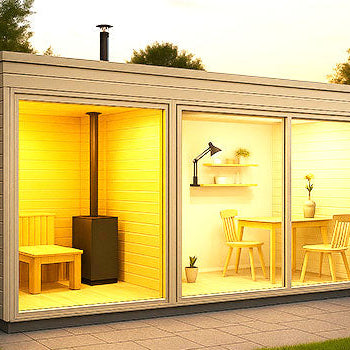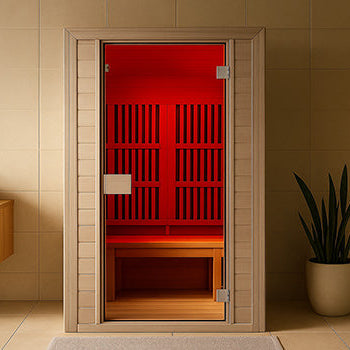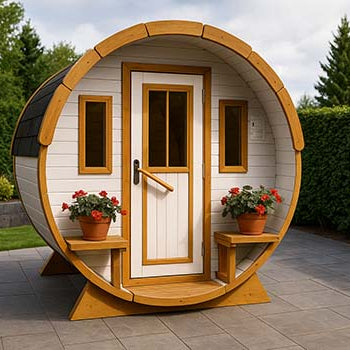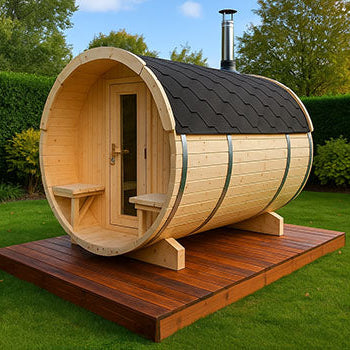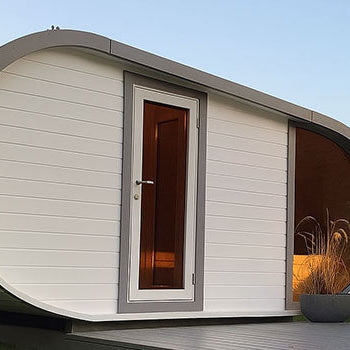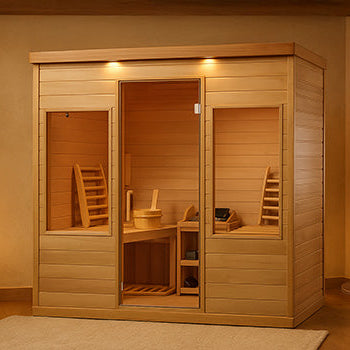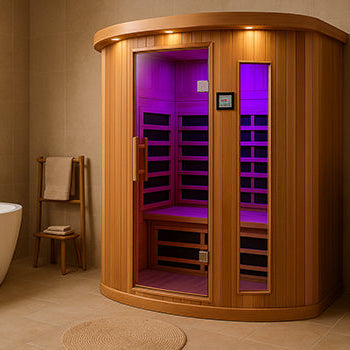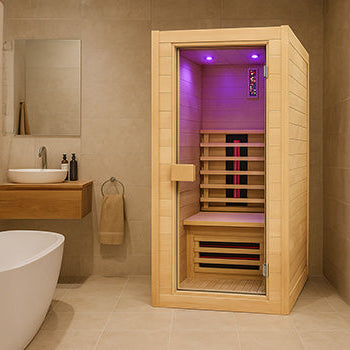Morning for energy, evening for relaxation—that’s the short answer! But let’s be real: figuring out your perfect sauna time takes a bit more finesse. Got a garden outdoor sauna tucked behind your shed? Or maybe a cosy indoor sauna in your home? Either way, when you use it can make or break your wellness routine. Saunas do more than just make you sweat—they can boost your mood, improve your sleep, and even help with recovery. But only if you time it right.
This guide breaks it all down for you, so you can stop guessing and start glowing.

Timing Your Sauna Session: When is the "Best" Time?
Aligning Sauna Use with Your Goals (Relaxation, Recovery, Energy)
Here’s the thing—there’s no one “best” time that works for everyone. It really depends on what you want out of it.
If you're aiming to unwind after a long day, the evening's your best friend. Want to start your morning like a champ? Slide in for a sunrise sweat.
It’s all about syncing your session with your intention. Looking to boost energy? Clear your head? Recover after a workout? Timing changes everything.
Instead of squeezing it in randomly, create a rhythm that supports your goals—and you'll get way more out of every session.
Morning Sauna Sessions: Pros and Cons
Potential for Increased Energy and Mental Clarity
Nothing says “fresh start” like a morning sauna session. It’s like coffee—without the crash.
A quick 10- to 15-minute sit in your indoor wellness pod can:
-
Wake up your circulation and help your body warm up naturally
-
Boost mental clarity so you’re ready to tackle your day
-
Give your metabolism a gentle nudge to get going
Sounds great, right? But there’s a catch.
Too much heat too early can feel overwhelming, especially if you’re not hydrated or you’re rushing to get to work. If you’re not a morning person, you might find yourself sleepier after than before.
Try easing in. Go short, go slow, and sip water beforehand.
Evening Sauna Sessions: Winding Down for Better Sleep

Promoting Relaxation and Stress Relief Before Bed
Imagine this: the day’s done, dinner’s settled, and you’re stepping into your backyard outdoor sauna retreat as the sky turns pink.
You sit, you sweat, you sigh. Stress? Gone.
Evening saunas are your body’s way of saying, “Okay, I’m ready to rest now.”
They help:
-
Lower cortisol and switch your nervous system into chill mode
-
Ease tension from muscles that have been working all day
-
Signal your brain it’s time to slow down
Research on Saunas and Sleep Quality
Science backs this up, too.
After a sauna, your body cools down naturally. That cooling is part of your natural sleep cycle—so it tells your brain, “Hey, it’s bedtime.”
People who sauna in the evening report falling asleep faster and sleeping more deeply.
Just keep it mellow. No screens. No emails. Just heat, rinse, and relax.
Sauna Use Around Exercise: Pre- vs. Post-Workout
Post-Workout: The Preferred Time for Muscle Recovery
If you’ve just crushed a workout, don’t skip the sauna. This is prime recovery time.
A 15–20 minute session in your steam cabin after training can:
-
Flush out lactic acid and reduce soreness
-
Boost blood flow, delivering nutrients to tired muscles
-
Extend that post-workout high with deep relaxation
It’s like a cool-down—but hotter.
Just hydrate first. And give yourself 10–15 minutes post-exercise to settle before stepping in.
Pre-Workout: Potential Benefits and Significant Drawbacks
Now, using a sauna before your workout? That’s trickier.
Yes, it can:
-
Loosen you up
-
Get you sweating early
-
Help with mental focus
But it can also:
-
Leave you lightheaded or overheated before you even start
-
Dehydrate you faster, especially in cardio-heavy sessions
-
Make your workout feel harder
In short: not worth it for most people. Stick to warm-ups, not full-on sauna heat.
Times to Generally Avoid Using a Sauna
Immediately Following Large Meals or Alcohol Consumption
There are a few “no-go” times—moments when using the sauna just isn’t a good idea.
Skip your session if:
-
You just ate a massive meal – digestion and heat don’t mix
-
You’ve been drinking alcohol, and high heat can be a dangerous combo
-
You’re feeling dizzy, ill, or rundown – your body needs rest, not more stress
The rule? If your body’s already working hard, don’t push it. Let it rest, then come back stronger for your next sweat.
Conclusion: Finding the Sauna Schedule That Works Best for You

So what’s the verdict?
Morning = energy. Evening = calm. Post-workout = recovery. It really is that simple.
But more importantly? The right time is your time.
Maybe it’s after the kids are in bed. Maybe it’s before your first Zoom meeting. Maybe it’s Sunday afternoon with a playlist and no plans.
The best sauna routine is one you actually enjoy and stick to.
Play around with timing. Listen to your body. Don’t worry about being perfect.
Just keep showing up—and let the heat do the healing.







